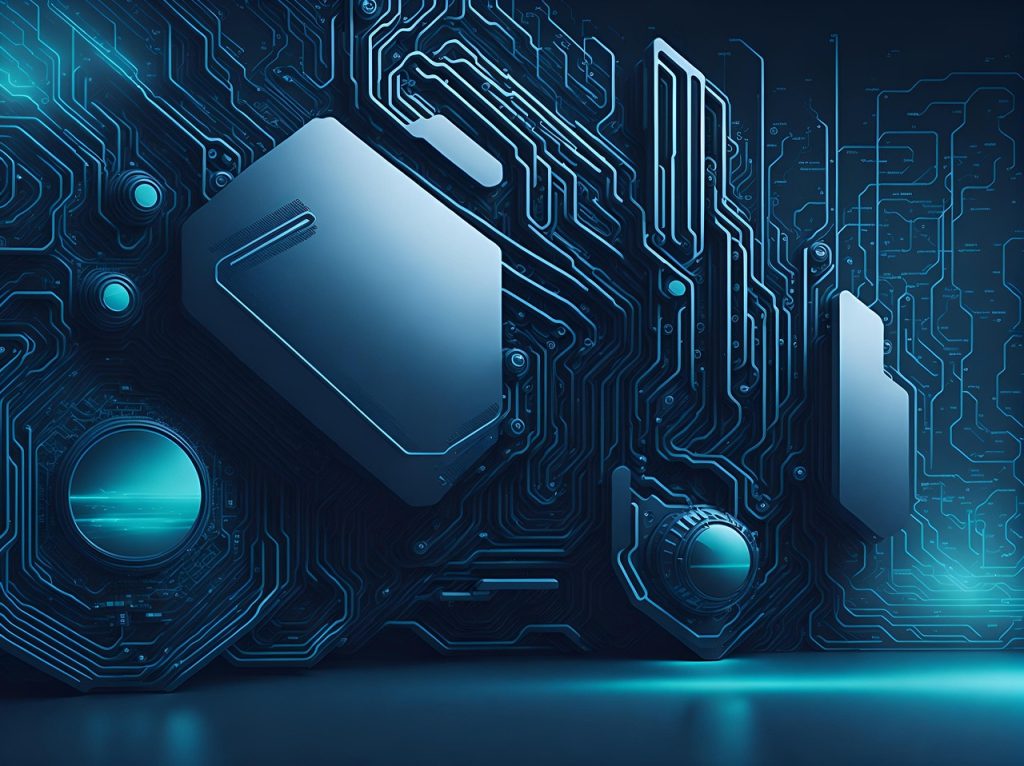Artificial Intelligence (AI) has undergone a remarkable transformation since its inception, evolving from rigid, rule-based systems to sophisticated generative models capable of creating original content. This journey reflects not only technological advancements but also a deeper understanding of how machines can emulate human-like intelligence and creativity. In this blog post, we’ll take a historical perspective on AI development, tracing its path from the earliest systems to the emergence of generative models, while exploring key milestones, influential figures, and the implications of these advancements.
The Dawn of AI: Rule-Based Systems
The story of AI begins in the mid-20th century, a time when the idea of machines mimicking human intelligence captivated researchers. One of the earliest milestones was the 1956 Dartmouth Conference, where the term “artificial intelligence” was coined by John McCarthy and his colleagues. This event marked the formal birth of AI as a field of study. Around this time, pioneers like Alan Turing also laid foundational ideas, such as the Turing Test, to evaluate a machine’s ability to exhibit intelligent behavior.
The first AI systems were rule-based, often referred to as expert systems. These programs operated on a simple principle: human experts encoded their knowledge into a set of predefined “if-then” rules, which the system followed to make decisions or solve problems. For example, in the 1970s, the MYCIN system was developed to diagnose bacterial infections and recommend treatments. It relied on a knowledge base of medical rules provided by experts, such as “if the patient has a fever and a positive culture, then consider antibiotics.” These systems showed promise in specific, well-defined domains like medicine and finance.
However, rule-based systems had significant limitations. They were brittle—unable to handle situations outside their programmed rules—and lacked the ability to learn or adapt. If a scenario wasn’t explicitly accounted for, the system failed. This rigidity exposed the need for a more dynamic approach, setting the stage for the next phase of AI evolution.
The Shift to Machine Learning
By the late 20th century, researchers began exploring ways to make AI more flexible, leading to the rise of machine learning (ML). Unlike rule-based systems, which depended entirely on human-crafted instructions, machine learning allowed systems to learn patterns and make decisions based on data. This marked a paradigm shift in AI, enabling machines to improve their performance over time without explicit reprogramming.
Machine learning encompasses several approaches:
- Supervised Learning: Models are trained on labeled data, such as identifying cats in photos by learning from examples tagged as “cat” or “not cat.”
- Unsupervised Learning: Systems find patterns in unlabeled data, like clustering customers based on purchasing behavior.
- Reinforcement Learning: Agents learn by trial and error, interacting with an environment to maximize rewards, as seen in game-playing AI.
An early example of natural language processing, ELIZA, developed by Joseph Weizenbaum in the 1960s, hinted at the potential of machine-driven interaction. Though still rule-based, ELIZA simulated conversation by matching user inputs to scripted responses, paving the way for more data-driven approaches in ML.
The Rise of Neural Networks and Deep Learning
The seeds of another breakthrough were planted in the 1980s with the exploration of neural networks—computational models inspired by the human brain. These networks consist of layers of interconnected nodes (or “neurons”) that process data and adjust their connections to improve accuracy. Early neural networks showed promise but were hampered by limited computational power and insufficient data.
The resurgence of neural networks came in the 2010s, fueled by two key developments: the availability of massive datasets (thanks to the internet) and advancements in hardware, particularly Graphics Processing Units (GPUs). This era gave birth to deep learning, a subset of machine learning that uses deep neural networks with many layers to tackle complex tasks.
Deep learning revolutionized AI, driving breakthroughs in fields like computer vision and speech recognition. A standout moment was in 2016 when Google DeepMind’s AlphaGo defeated world champion Lee Sedol in the ancient game of Go—a feat once thought impossible due to the game’s complexity. Pioneers like Geoffrey Hinton, Yann LeCun, and Yoshua Bengio, often called the “godfathers of deep learning,” played crucial roles in these advancements, earning recognition for their work on neural networks.
Enter Generative Models
While deep learning excelled at tasks like classification (e.g., identifying objects in images) and prediction (e.g., forecasting weather), a new class of AI emerged in the 2010s: generative models. Unlike their predecessors, which analyzed existing data, generative models create new content—images, text, music, and more—mimicking the data they were trained on. This shift from discriminative to generative AI marked a leap toward machine creativity.
Two prominent types of generative models stand out:
- Generative Adversarial Networks (GANs): Introduced by Ian Goodfellow in 2014, GANs pit two neural networks against each other—a generator that creates content and a discriminator that evaluates it. Through this competition, GANs produce highly realistic outputs, such as photorealistic faces or artwork.
- Variational Autoencoders (VAEs): VAEs use probabilistic techniques to generate new data points, offering a different approach to content creation with applications in image synthesis and beyond.
Generative models differ fundamentally from earlier AI systems. Rule-based systems followed strict instructions, and traditional ML models focused on specific tasks. In contrast, generative models exhibit flexibility and creativity, producing novel outputs that push the boundaries of what AI can achieve. Today, they power applications like AI-generated art, automated content writing, and even music composition.
The Transformer Revolution: A New Era in AI
A pivotal advancement in the journey toward sophisticated generative models came with the introduction of Transformers in 2017. Developed by Vaswani et al. in the paper “Attention is All You Need”, Transformers are a type of neural network architecture designed to handle sequential data, such as text. They have since become the backbone of many state-of-the-art models in natural language processing (NLP) and beyond.
At the heart of Transformers is the attention mechanism, which allows the model to weigh the importance of different parts of the input data. Unlike earlier models that processed data sequentially, Transformers can focus on relevant information from across the entire input, making them particularly effective for tasks like language translation, text summarization, and even image generation. Imagine reading a book and being able to instantly recall and connect key details from any page—Transformers enable a similar capability for machines, allowing them to generate coherent and contextually accurate outputs.
Transformers have revolutionized NLP, powering models like BERT, GPT, and T5. For instance, OpenAI’s GPT-4 can generate human-like text, answer questions, and even write code, showcasing the immense potential of Transformer-based generative models. Beyond language, Transformers have been adapted for other domains, such as computer vision, with Vision Transformers (ViTs) demonstrating impressive results in image classification tasks.
However, Transformers are not without challenges. They require vast amounts of data and computational resources to train, which can be a barrier for smaller organizations or researchers. Efforts are ongoing to make Transformers more efficient and accessible, ensuring that their benefits can be widely shared.
The rise of Transformers marks a significant milestone in AI’s evolution, bringing us closer to machines that can understand and generate human-like text with unprecedented fluency. As this technology continues to evolve, it promises to unlock new possibilities for natural and intuitive human-machine interactions.
Ethical Implications and Challenges
The rise of generative models, including those powered by Transformers, has not been without controversy. Their ability to create realistic content has led to concerns about deepfakes—fabricated videos or audio that can deceive viewers—and the spread of misinformation. For instance, a deepfake of a public figure could be used to manipulate public opinion, raising ethical questions about accountability and regulation. As these technologies become more accessible, balancing innovation with responsibility remains a critical challenge.
Looking Ahead: The Future of AI
The evolution of AI from rule-based systems to generative models illustrates the field’s rapid progress and its increasing impact on society. What began as a quest to encode human expertise has grown into a discipline that mimics human creativity and adaptability. Yet, this is not the end of the story.
Looking forward, researchers are tackling new frontiers. Explainable AI aims to make AI decision-making more transparent, addressing the “black box” nature of deep learning models. Meanwhile, the integration of AI with technologies like quantum computing could unlock unprecedented computational power, accelerating discoveries in science and medicine.
Quantum computing represents a paradigm shift in how we process information, leveraging quantum mechanical phenomena to solve problems that would be intractable for classical computers. When combined with autonomous AI agents—systems that can perceive their environment, make decisions, and take actions without human intervention—we enter an entirely new realm of possibilities. These agents, powered by quantum algorithms, could navigate complex problem spaces with unprecedented efficiency, potentially revolutionizing fields from drug discovery to climate modeling. We will explore these fascinating intersections of quantum computing and agent-based AI systems in a future blog post, looking into both the technical foundations and the transformative applications that lie ahead. Generative models, too, are evolving, with ongoing work to improve their quality, control, and ethical safeguards.
For those eager to learn more, here are some excellent resources:
- A Brief History of Artificial Intelligence
- The Rise of Generative AI
- Ethical Implications of Generative Models
- Transformers: The Architecture Behind Modern NLP
Conclusion
From the rule-based expert systems of the 1970s to the generative models of today, AI’s journey reflects humanity’s ambition to build machines that think, learn, and create. Each phase—rule-based systems, machine learning, deep learning, generative models, and now Transformers—has built on the last, overcoming limitations and expanding possibilities. As we stand on the cusp of further breakthroughs, AI continues to shape our world in ways both profound and unpredictable, promising a future where machines not only assist us but inspire us as well.



